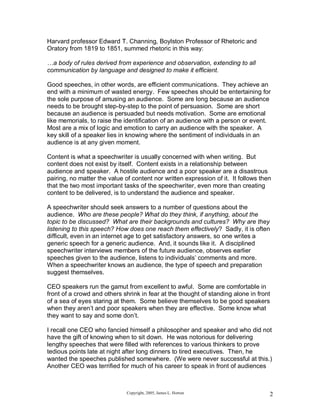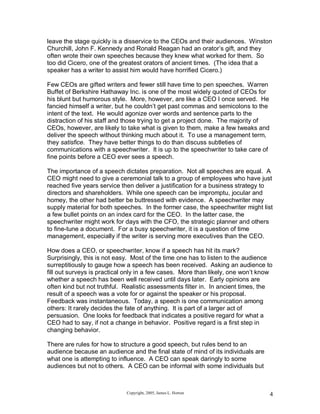The document provides guidance on writing effective speeches for CEOs. It discusses that a good speech moves an audience to the speaker's desired conclusion. It emphasizes understanding the audience and speaker as the most important tasks. A good speech is an efficient communication that achieves its purpose with minimal wasted effort. While there are guidelines, the most important factor is understanding and adapting to the specific audience as audiences and circumstances vary widely.




